Abstract
The test for hippurate hydrolysis is critical for separation of Campylobacter jejuni and C. coli strains. Glycine and benzoic acid are formed when hippurate is hydrolyzed by C. jejuni. The test used in most laboratories is one of several variations of the ninhydrin tube test described by Hwang and Ederer (M. Hwang and G. M. Ederer, J. Clin. Microbiol. 1:114-115, 1975) for detection of glycine. We evaluated three modifications of the Hwang and Ederer method and the gas-liquid chromatographic (GLC) method described by Kodaka et al. (H. Kodaka, G. L. Lombard, and V. R. Dowell, Jr., J. Clin. Microbiol. 16:962-964, 1982) for detecting benzoic acid. Campylobacter strains comprised 22 C. jejuni, 11 C. coli, and 8 C. laridis strains. The species identification of each strain was confirmed by DNA relatedness. All strains of C. jejuni were positive and all strains of C. coli and C. laridis were negative by the GLC method for detecting hippurate hydrolysis, whereas three strains of C. jejuni gave negative or variable results in the tube tests. The GLC method is more sensitive than the tube methods for detecting hippurate hydrolysis and should be used on cultures yielding variable or questionable test results.
Full text
PDF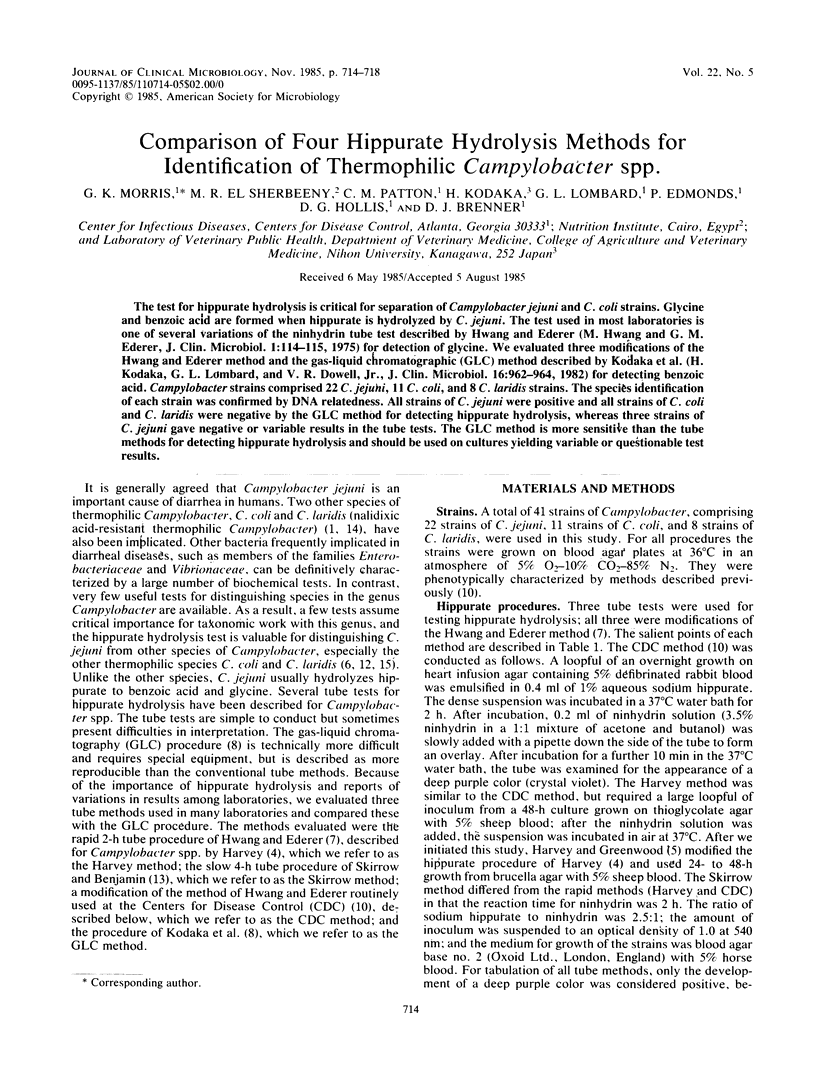
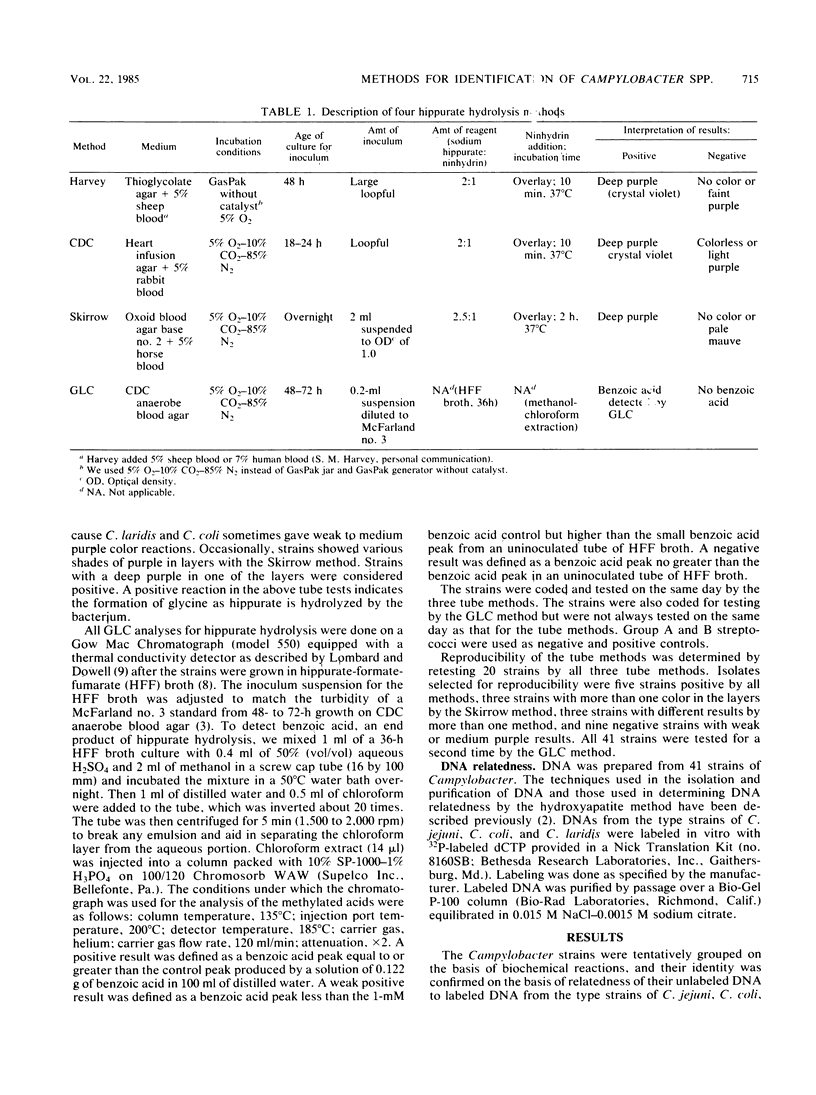
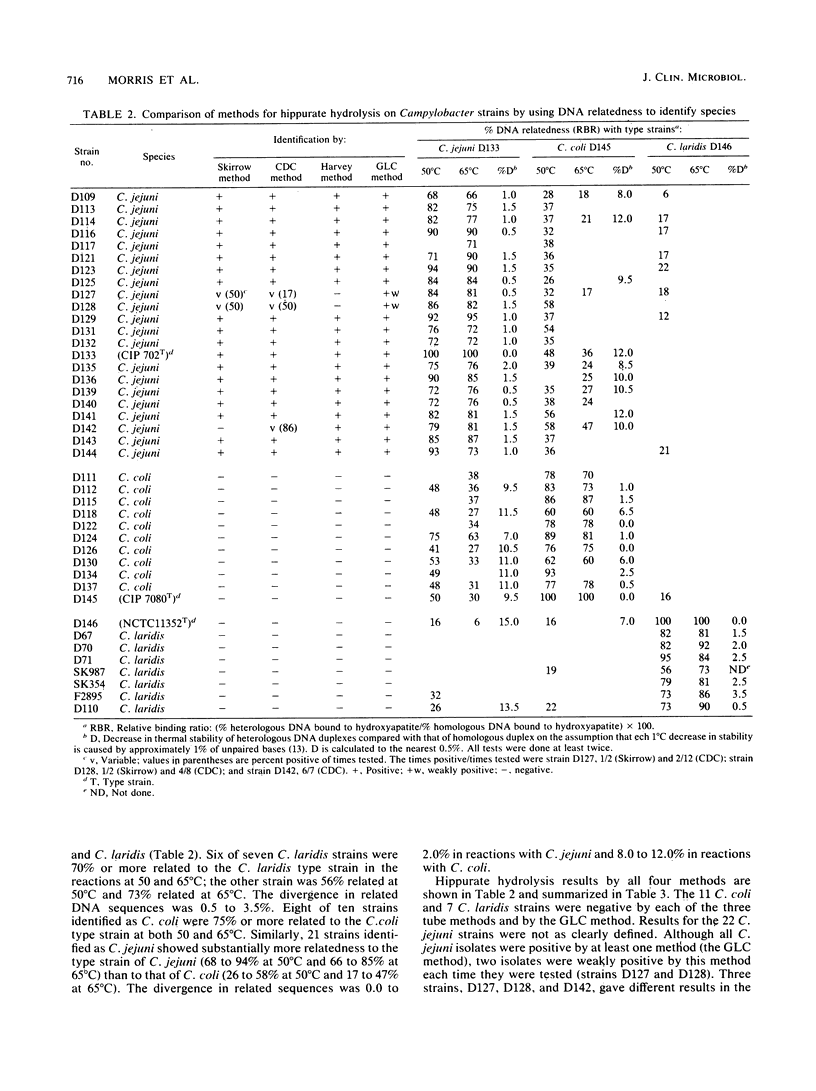
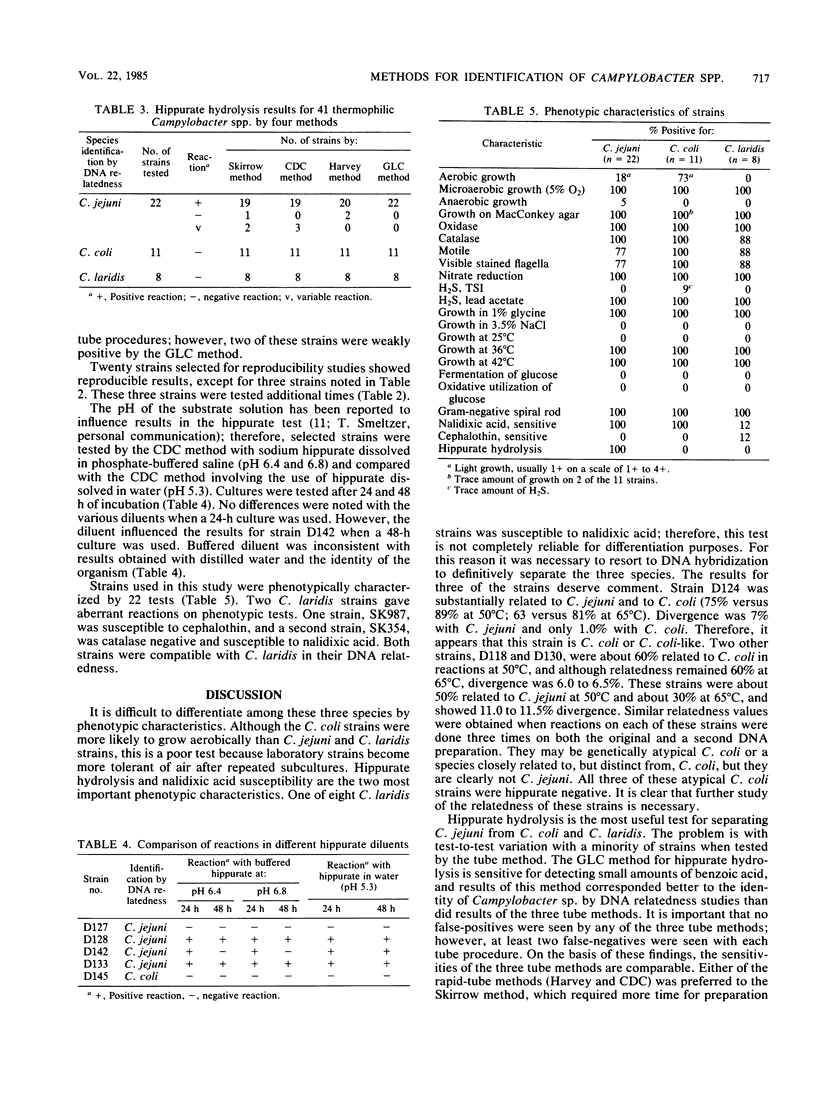
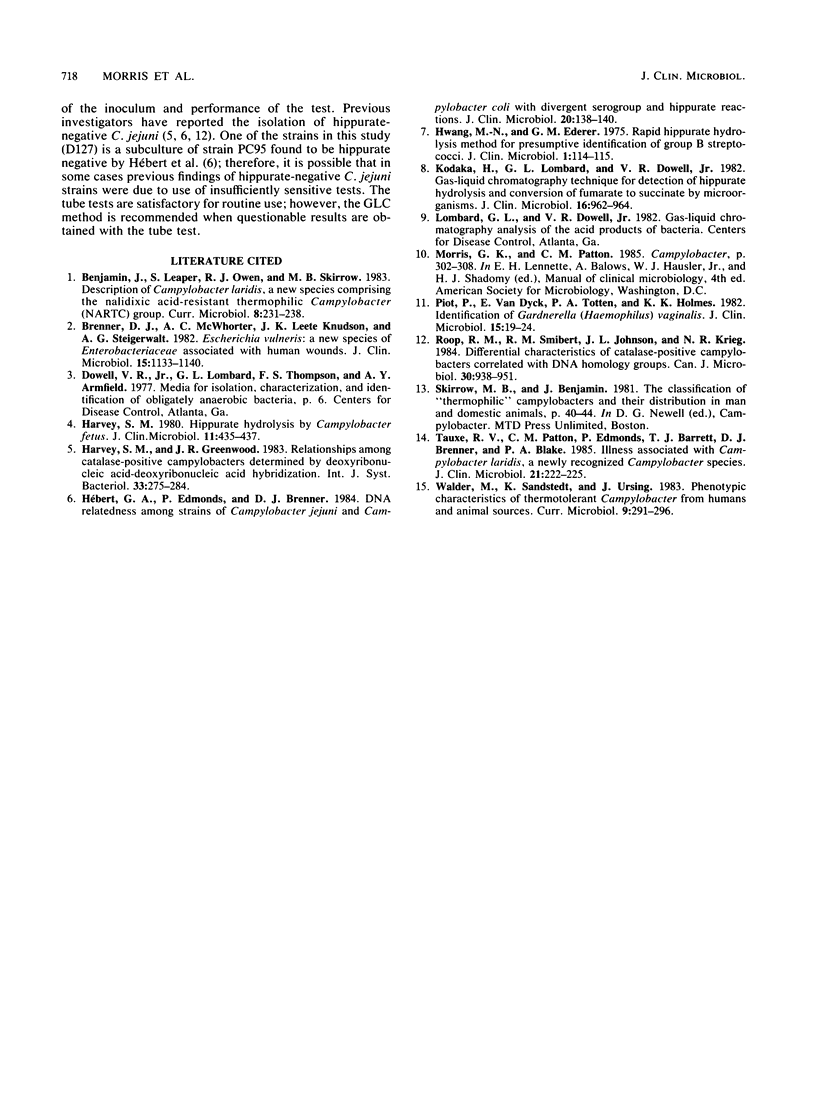
Selected References
These references are in PubMed. This may not be the complete list of references from this article.
- Brenner D. J., McWhorter A. C., Knutson J. K., Steigerwalt A. G. Escherichia vulneris: a new species of Enterobacteriaceae associated with human wounds. J Clin Microbiol. 1982 Jun;15(6):1133–1140. doi: 10.1128/jcm.15.6.1133-1140.1982. [DOI] [PMC free article] [PubMed] [Google Scholar]
- Harvey S. M. Hippurate hydrolysis by Campylobacter fetus. J Clin Microbiol. 1980 Apr;11(4):435–437. doi: 10.1128/jcm.11.4.435-437.1980. [DOI] [PMC free article] [PubMed] [Google Scholar]
- Hwang M. N., Ederer G. M. Rapid hippurate hydrolysis method for presumptive identification of group B streptococci. J Clin Microbiol. 1975 Jan;1(1):114–115. doi: 10.1128/jcm.1.1.114-115.1975. [DOI] [PMC free article] [PubMed] [Google Scholar]
- Hébert G. A., Edmonds P., Brenner D. J. DNA relatedness among strains of Campylobacter jejuni and Campylobacter coli with divergent serogroup and hippurate reactions. J Clin Microbiol. 1984 Jul;20(1):138–140. doi: 10.1128/jcm.20.1.138-140.1984. [DOI] [PMC free article] [PubMed] [Google Scholar]
- Kodaka H., Lombard G. L., Dowell V. R., Jr Gas-liquid chromatography technique for detection of hippurate hydrolysis and conversion of fumarate to succinate by microorganisms. J Clin Microbiol. 1982 Nov;16(5):962–964. doi: 10.1128/jcm.16.5.962-964.1982. [DOI] [PMC free article] [PubMed] [Google Scholar]
- Piot P., Van Dyck E., Totten P. A., Holmes K. K. Identification of Gardnerella (Haemophilus) vaginalis. J Clin Microbiol. 1982 Jan;15(1):19–24. doi: 10.1128/jcm.15.1.19-24.1982. [DOI] [PMC free article] [PubMed] [Google Scholar]
- Roop R. M., 2nd, Smibert R. M., Johnson J. L., Krieg N. R. Differential characteristics of catalase-positive campylobacters correlated with DNA homology groups. Can J Microbiol. 1984 Jul;30(7):938–951. doi: 10.1139/m84-147. [DOI] [PubMed] [Google Scholar]
- Tauxe R. V., Patton C. M., Edmonds P., Barrett T. J., Brenner D. J., Blake P. A. Illness associated with Campylobacter laridis, a newly recognized Campylobacter species. J Clin Microbiol. 1985 Feb;21(2):222–225. doi: 10.1128/jcm.21.2.222-225.1985. [DOI] [PMC free article] [PubMed] [Google Scholar]


